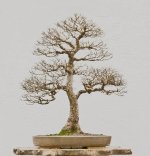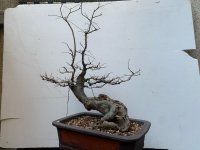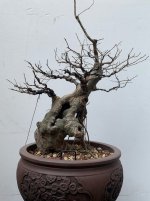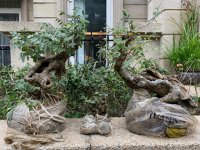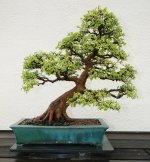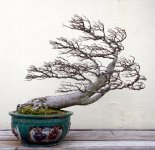Among professional bonsai growers/artists/masters in the US, Europe and Japan, you rarely find a Chinese elm in their bonsai collections. I wonder why? Given that this species is best suited for beginners due to its fast growth, rapid trunk thickening, disease resistance, small leaves (almost perfect ramification) and to some extent winter hardiness. Is it because the Chinese elm is "too easy" to grow and professionals are "ashamed" to have such a "beginner" kind of tree species in their collection? Not enough of a challenge? "Cheap" look? Or is it just a misconception that Chinese elms are only suitable for small shohin sized bonsai, even though they can have quite thick trunks if grown in the ground or in larger containers?
Why are Japanese maples, for example, much more popular even though they have larger leaves than Chinese elms (with the exception of acer palmatum Shishigashira) and grow more slowly, are more sensitive to heat, and their trunks thicken slowly? Can any bonsai expert explain to me the reason? Or is it just a pure coincidence?
Usually in professional collections we see many different pines, junipers, some yews, Japanese maples and some other deciduous trees, but it is rare to find a Chinese elm. Even other types of elms such as ulmus minor are more popular, I think.
Sorry for English ...
Why are Japanese maples, for example, much more popular even though they have larger leaves than Chinese elms (with the exception of acer palmatum Shishigashira) and grow more slowly, are more sensitive to heat, and their trunks thicken slowly? Can any bonsai expert explain to me the reason? Or is it just a pure coincidence?
Usually in professional collections we see many different pines, junipers, some yews, Japanese maples and some other deciduous trees, but it is rare to find a Chinese elm. Even other types of elms such as ulmus minor are more popular, I think.
Sorry for English ...
Last edited:



